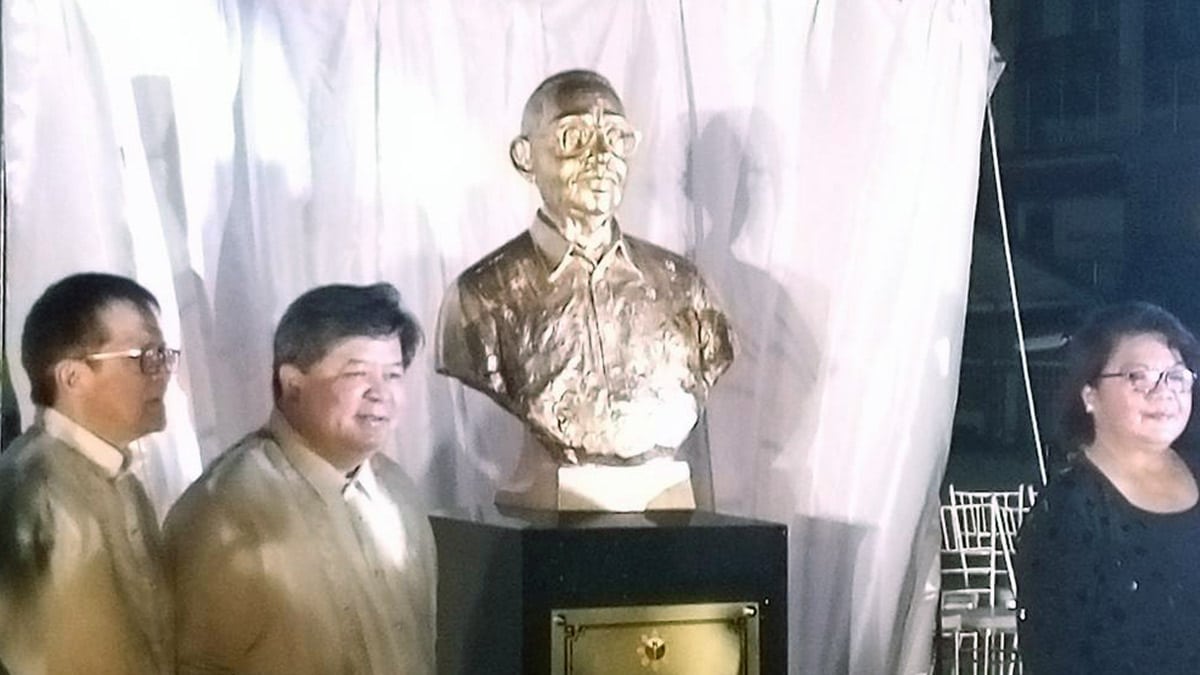Bust of Romero by sculptor Frederic Caedo unveiled in Dumaguete, with (from left) his son, director Joey Romero, Mayor Felipe Antonio Remollo and NCCA’s Marichu Tellano —PHOTO BY AMADIS MA. GUERRERO From childhood onwards, Edgar Sinco Romero—later known simply as Eddie Romero—was drawn to literature and movies. He started writing stories when he was 7 and, by the time he was 16, one of his stories, “Oh Johnny Oh,” was published in the prestigious Philippines Free Press.
His career as a film director began in the late 1940s and spanned six decades. Romero wrote his screenplays in English, later translated into Tagalog. He often produced or coproduced his films.

He wrote the script for “Ang Maestra” (1941), one of the early successes of Gerry de Leon, who became his mentor. Another major influence was Japanese director Yasujiro Ozu. “Ang Maestra” starred Rogelio de la Rosa and Sylvia la Torre, one of the many leading actors and actresses who would be directed by the future national artist from Dumaguete City, Negros Oriental.
Romero’s first movie was “Ang Kamay ng Diyos” in 1947, followed two years later by “Diego Silang,” for which he won a best director award. His 1953 production, “Ang Asawa Kong Americana,” was the first film to win an important award in an Asian film festival. As a child, I remember seeing Romero’s “The Day of the Trumpet” (1957), his first movie to be released internationally, a highly romanticized, almost laughable .
















